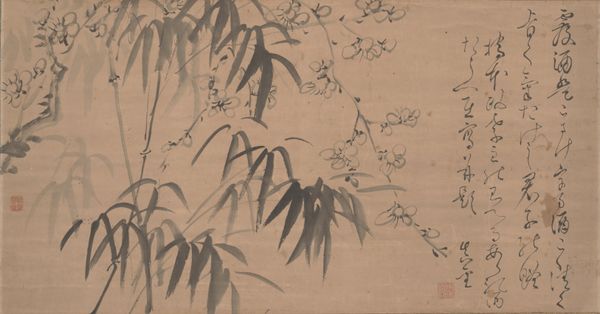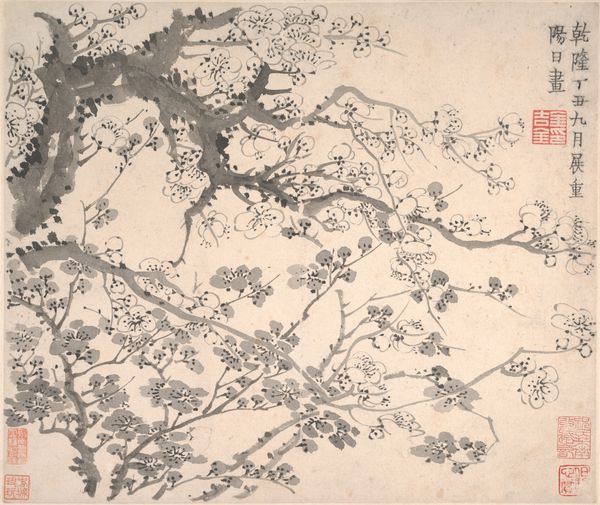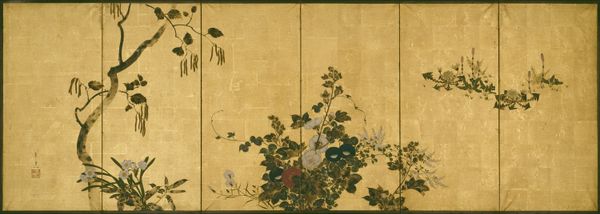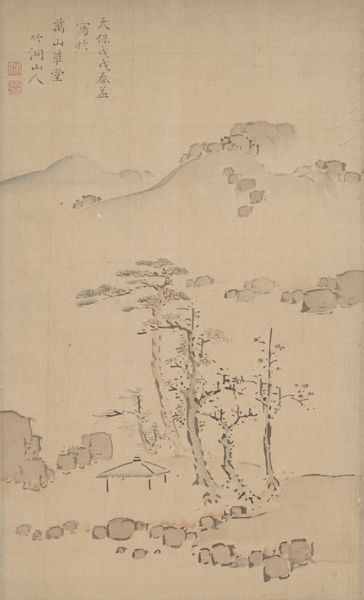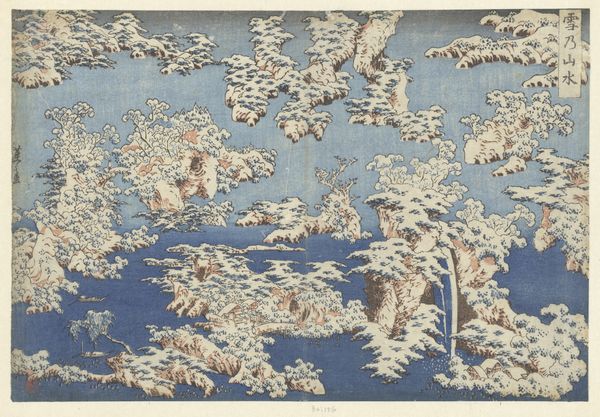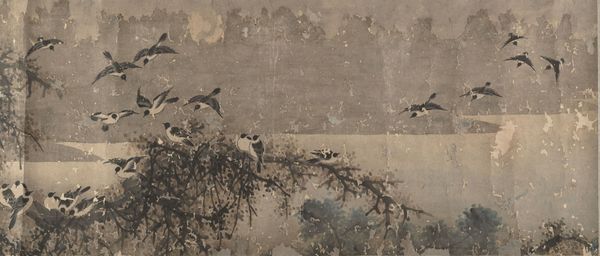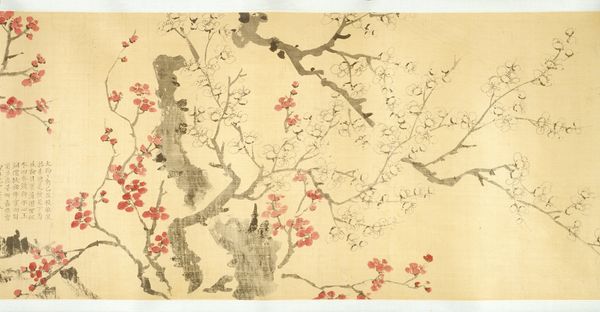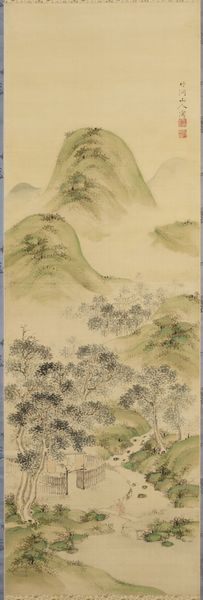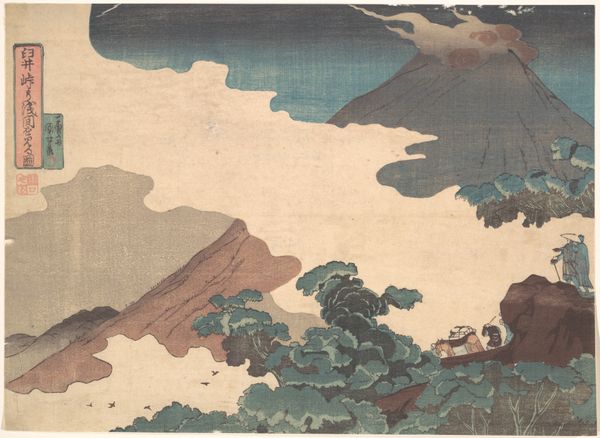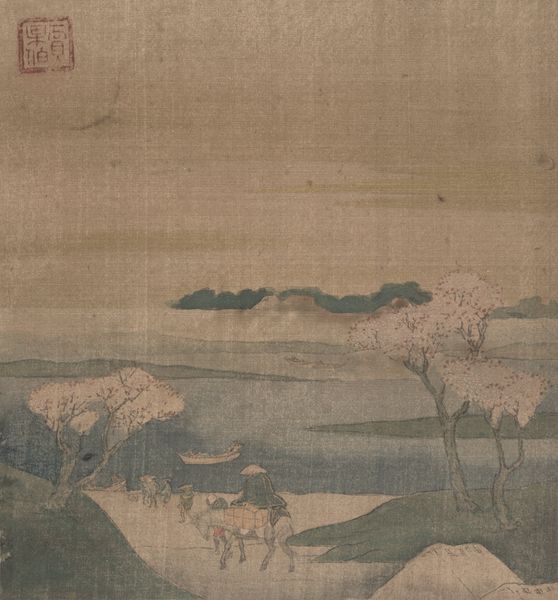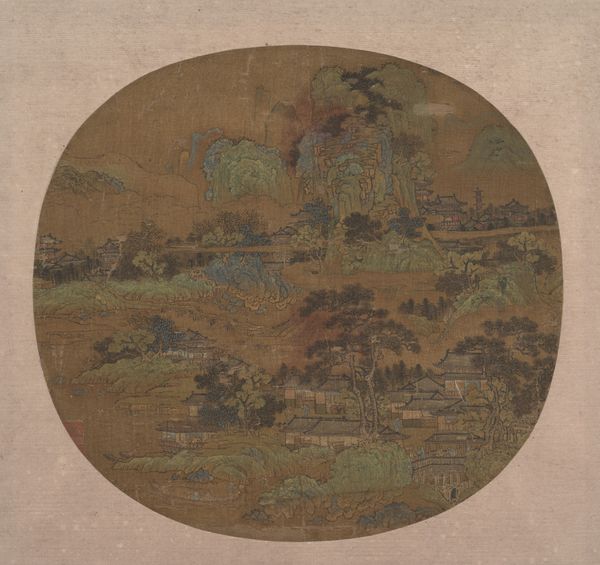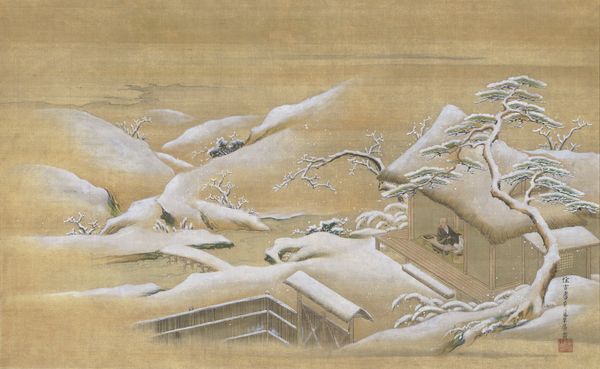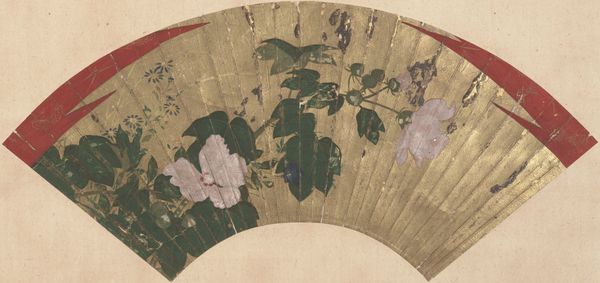
painting, paper, ink
#
painting
#
asian-art
#
landscape
#
bird
#
ukiyo-e
#
paper
#
ink
#
orientalism
#
watercolor
#
realism
Dimensions: Image: 50 × 21 13/16 in. (127 × 55.4 cm) Overall with mounting: 84 × 27 9/16 in. (213.4 × 70 cm) Overall with knobs: 84 × 30 in. (213.4 × 76.2 cm)
Copyright: Public Domain
Curator: This piece absolutely breathes, doesn't it? It feels less like a depiction and more like a whispered secret of a moment lived. Editor: Indeed. We're looking at "Egrets in a Lotus Pond," created around 1852 by Yamamoto Baiitsu. It's an ink and color on paper painting, a graceful example of the naturalist painting tradition, now residing here at The Metropolitan Museum of Art. The use of negative space in that upper field is incredible. Curator: Negative space that teems with possibility! All those egrets scattered throughout. Some tucked away among the leaves, others mid-flight, like scattered thoughts rising into the sky. Each brushstroke seems to capture not just the bird, but the very air around it. Did Baiitsu use watercolor? The fluidity lends the whole piece a beautiful, dreamlike quality. Editor: The ink work creates a delicate watercolor effect and achieves a sense of depth, positioning the egrets amongst those lily pads. There’s a beautiful rhythm in their arrangement, punctuated by the white of the birds against the subtle backdrop. It draws heavily on traditional orientalist styles that would've been prominent at the time, wouldn't you agree? Curator: Definitely. The choice of the lotus pond isn't accidental. It's a space of spiritual and literal sustenance, reflected in the clustered communities and flight patterns depicted here. So yes, it’s certainly playing with orientalism, in that there's a romanticizing, for Western audiences at least. At the same time, it evokes tranquility and mindfulness—those egrets certainly aren't in a hurry. They capture a state of being, not just a place. Editor: It’s quite true, and I believe the piece can speak to us about the natural order, about symbiosis. The artist is not just showing us the beauty of the natural world but also hinting at something deeper about life itself. How art shapes culture is always deeply personal and powerful. Curator: Indeed, I’m grateful for this moment with these birds. And really, what could be a more beautiful act than bearing witness? To see beauty, to paint it. Editor: A sentiment perfectly encapsulated, and fitting for our reflections.
Comments
No comments
Be the first to comment and join the conversation on the ultimate creative platform.
